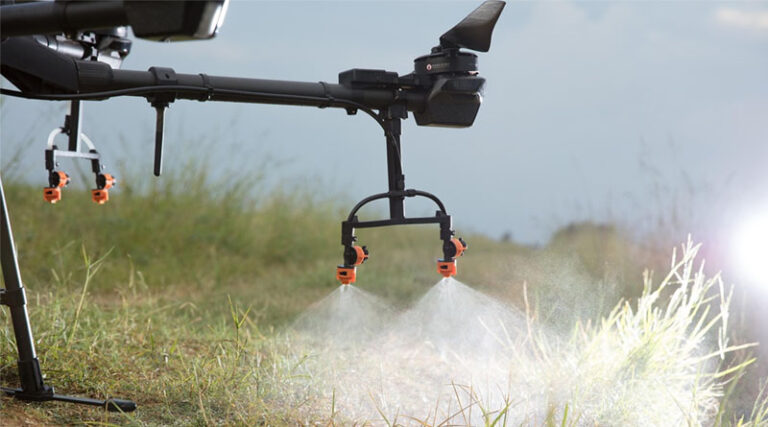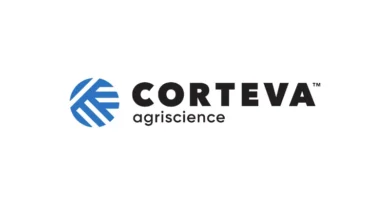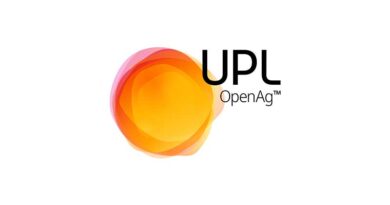
Canada’s PMRA Launches Year 2 of Pesticide Chemistry Verification with Updated Five-Year Plan
10 August 2025, Ottawa: The Pest Management Regulatory Agency (PMRA) of Canada has officially entered Year 2 of its pesticide chemistry verification initiative, continuing its modernization of pesticide oversight under a continuous review framework. The updated five-year work plan, covering the period from April 1, 2025, to March 31, 2030, outlines which active ingredients are scheduled for chemistry verification each year, starting with the confirmed list for FY2025-26.
In May 2025, the PMRA issued notices to registrants of active ingredients listed for the 2025-26 cycle, requesting updated chemistry data for their registered technical products. Registrants have been given 90 days to submit the required information, with reviews expected to conclude by March 2026.
The chemistry verification process ensures that the manufacturing of technical grade active ingredients remains aligned with approved specifications and methods. This is key to maintaining the integrity of health and environmental risk assessments. As part of this initiative, the PMRA may request additional data such as batch analyses or information on impurities of concern when needed.
Certain ingredients originally anticipated for Year 2 have been rescheduled to 2026–27 due to recent re-evaluation activities. These include iodosulfuron-methyl-sodium, prohexadione calcium, and German cockroach extract. The PMRA also confirmed that the outcomes of Year 1 verifications will be published later in 2025.
Modernizing Oversight Through a Continuous Review Model
With this initiative, PMRA has transitioned from periodic to continuous oversight of pesticide product chemistry. Chemistry verification is now embedded into the broader lifecycle management of active ingredients. Under the new framework, each active ingredient will undergo chemistry verification at least once every ten years, though the timeline may be accelerated in specific circumstances. This may include:
- The presence of known contaminants or impurities of concern,
- Emerging issues requiring reassessment,
- Repeated inconsistencies in manufacturing specifications.
PMRA’s updated approach enhances its capacity to act swiftly and ensures that chemistry reviews are current during re-evaluation phases—facilitating faster, evidence-based regulatory decisions.
Clear Expectations for Registrants
Registrants are required to submit comprehensive chemistry documentation, including updated product specifications, manufacturing processes, and quality control data. If discrepancies are found between submitted data and approved specifications, or if unreported changes in manufacturing are detected, Health Canada may pursue compliance or enforcement actions.
Further guidance on submission requirements is outlined in the agency’s memorandum titled: “Verifying Chemistry of Registered Technical Grade Active Ingredients and Integrated System Products.”
Active Ingredients Subject to Chemistry Verification
The updated work plan specifies the active ingredients scheduled for review each fiscal year through FY2029-30. Confirmed ingredients for FY2025-26 include widely used herbicides and insecticides such as:
- 2,4-D (including various salt and ester forms)
- Dicamba, Bromoxynil, Ethametsulfuron-methyl
- Gibberellins A4 and A7, Mineral oil, Mandipropamid, Spirotetramat, and Sulfentrazone
Future Verifications
For FY2026-27, the plan includes a diverse range of actives, such as bifenthrin, diazinon, formetanate hydrochloride, and German cockroach extract. Subsequent years will review additional actives across various classes, including biopesticides, disinfectants, fumigants, and plant growth regulators.
By 2029-30, the list expands to include complex compounds and newer chemistries such as broflanilide, fenpyroximate, prohydrojasmon, and natural oils like peppermint and lemongrass.
Below is the five-year chemistry verification work plan for 1 April 2025 to 31 March 2030.
Active ingredients subject to chemistry verification in 2025-2026 – confirmed
- 1,2-Benzisothiazolin-3-one, BIT
- 6-Benzylaminopurine (or: 6-benzyladenine)
- Bromoxynil
- Saponins of Chenopodium quinoa
- Chloridazon
- 2,4-D
- 2,4-D (present as amine salts: dimethylamine salt, diethanolamine salt, or other amine salts)
- 2,4-D (present as low volatile esters)
- 2,4-D (present as choline salt)
- Dicamba (present as acid, ester, salt)
- Dodine
- Ethametsulfuron-methyl
- Gibberellins A4 and A7 (omitted from Year 1)
- Imazapyr
- Mandipropamid
- MCPA (present as acid)
- MCPA (present as amine salts: diethanolamine, dimethylamine, or mixed amines)
- MCPA (present as esters)
- MCPA (present as potassium salt or as sodium salt)
- Mineral oil
- Nicosulfuron
- Oxirane derivatives (50% minimum)
- Pendimethalin
- 2-Phenylphenol
- 2-Phenylphenol (present as potassium salt)
- 2-Phenylphenol (present as sodium salt)
- Propylene glycol
- Rimsulfuron
- Sodium chlorate
- Sodium chloride
- Sodium chlorite
- Spirotetramat
- Sulfentrazone
- Tetrakis (hydroxymethyl) phosphonium sulfate (THPS)
Active ingredients subject to chemistry verification in 2026-2027
- n-Alkyl(25% c12, 60% c14, 15% c16)dimethylbenzylammonium chloride
- Alkyl(40% c12, 50% c14, 10% c16)dimethylbenzylammonium chloride
- n-Alkyl(68% c12, 32% c14)dimethyl ethylbenzyl ammonium chloride
- n-Alkyl (60% c14, 30% c16, 5% c12, 5% c18)dimethyl benzyl ammonium chloride
- n-Alkyl(40% c12, 50% c14, 10% c16)dimethylbenzylammonium saccharinate
- n-Alkyl(67% c12, 25% c14, 7% c16, 1% c18)dimethylbenzylammonium chloride
- Diisobutylphenoxyethoxyethyldimethylbenzylammonium chloride
- n-Dialkyl(5% c12, 60% c14, 30% c16, 5% c18)methylbenzylammonium chloride
- 1-Alkyl(c6-c18)-1,3-propanediamine
- N-Alkyl-1,3-propanediamine acetate
- N-coco-alkyl trimethylene diamines (present as monobenzoate salt)
- 1,3-bis(hydroxymethyl)-5,5-dimethylhydantoin, hydroxymethyl-5,5-dimethylhydantoin
- Ammonium soap of fatty acid
- Bifenthrin
- Carbathiin
- Chlorthal (present as dimethyl ester)
- Cloransulam-methyl
- Chlormequat chloride
- Codlelure
- Cyprosulfamide
- n-Decanol
- Desmedipham
- Diazinon
- Didecyldimethylammonium chloride
- Dimethenamid-p
- Dioctyldimethylammonium chloride
- Dithiopyr
- Flumioxazin
- Formetanate hydrochloride
- German cockroach extract
- Glutaraldehyde
- Hexazinone
- Imazamethabenz-methyl
- Iodosulfuron-methyl-sodium
- Lime sulphur
- Mono- and dipotassium phosphite
- Metsulfuron-methyl
- Metaldehyde
- Maleic hydrazide
- Naphthylacetic acid
- Oxydiethylene bis(alkyl dimethyl ammonium chloride)
- 1-Octanol
- r-(-)-1-Octen-3-ol
- Octyldecyldimethylammonium chloride
- Oxycarboxin
- Ozone
- Picloram (present as acid)
- Picloram (present as amine salts)
- Picloram (present as potassium salt)
- Prohexadione calcium
- Propyzamide
- Phenmedipham
- Saflufenacil
- Simazine plus related active triazines
- Streptomycin
- Thiencarbazone-methyl
- Thifensulfuron-methyl
- Tribenuron-methyl
- Trifluralin
- Available chlorine, present as sodium hypochlorite2
Active ingredients subject to chemistry verification in 2027-2028
- Ancymidol
- Arsenic acid
- Available chlorine present as 1-bromo-3-chloro-5,5-dimethylhydantoin and related hydantoins
- Available bromine present as 1-bromo-3-chloro-5,5-dimethylhydantoin and related hydantoins
- Available chlorine present as 1-bromo-3-chloro-5,5-dimethylhydantoin, 1,3-dichloro-5,5-dimethylhydantoin, 1,3-dichloro-5-ethyl-5-methylhydantoin and related hydantoins
- Available chlorine present as 1,3-dichloro-5,5-dimethylhydantoin and 1,3- dichloro-5-ethyl-5-methylhydantoin
- Clopyralid (present as acid, or as salts)
- Copper (present as copper naphthenate)
- Copper (present as copper 8-quinolinolate)
- Copper, present as basic copper carbonate
- Basic copper sulfate
- Bromethalin
- Chlorpropham
- Chlorsulfuron
- Chromic acid
- Citronella oil
- Clomazoneb
- Copper (present as cuprous oxide, cupric oxide and metallic copper)
- Copper (present as cupric oxide)
- Creosote
- Cyazofamid
- Diflubenzuron
- Diphacinone (present in free form or as sodium salt)
- Diphenylamine
- Dried blood
- Endothal or endothall
- EPTC
- Fluopicolide
- Formaldehyde
- Formic acid
- Icaridin
- Indaziflam
- 3-Methyl-2-cyclohexen-1-one
- Methyl nonyl ketone
- Metofluthrin
- Oriental mustard seed meal
- Paraformaldehyde
- Penflufen
- Penthiopyrad
- Propiconazole
- Verbenone
- Extract of Reynoutria sachalinensis
- Zinc as elemental (present as zinc naphthenate)
- Zinc (present as zinc oxide)
- Available chlorine, present as calcium hypochlorite3
Active ingredients subject to chemistry verification in 2028-2029
- Abamectin
- Acequinocyl
- Ametoctradin
- Aminopyralid
- Ammonia (present as ammonium sulfate)
- Ammonium bromide
- Atrazine (plus related active triazines)
- Azoxystrobin
- Bifenazate
- Bensulide
- Benzyl benzoate
- Bromacil (present in free form, as dimethylamine salt, or as lithium salt)
- Liquid carbon dioxide
- Cloquintocet-mexyl
- Chlorfenapyr
- Cyantraniliprole
- Denatonium benzoate
- 3-Decen-2-one
- 1,2-Dibromo-2,4-dicyanobutane
- Difethialone
- Dodecylguanidine hydrochloride
- Ethalfluralin
- (E,Z)-2,13-octadecadien-1-yl acetate
- Fenoxaprop-p-ethyl
- Ferric sodium ethylenediaminetetraacetic acid
- Fluazifop-p-butyl and s-isomer
- Fluopyram
- Fluoxastrobin
- Fluxapyroxad
- Fosetyl-al
- Garlic juice
- Glufosinate-ammonium
- Halosulfuron (present as methyl ester)
- Hydramethylnon
- Imiprothrin
- Kasugamycin hydrochloride hydrate
- Malathion
- MCPB
- MCPB (present as sodium salt)
- Mesotrione
- Metalaxyl-m and S-isomer
- 1-Methylcyclopropene
- Metribuzin
- Mono- and dibasic sodium, potassium, and ammonium phosphites
- Myclobutanil
- Naled
- Natamycin
- Niclosamide
- Octenol
- Oil of lemon eucalyptus, hydrated, cyclized
- d-Phenothrin
- Potassium dimethyldithiocarbamate
- Poly[oxyethylene(dimethyliminio)ethylene(dimethyliminio)ethylene dichloride]
- Picoxystrobin
- Pyroxasulfone
- Quinclorac (present as dimethylamine salt)
- Sedaxane
- S-metolachlor and R-enantiomer
- Sulfoxaflor
- Tea tree oil
- Tetraconazole
- Tributyl tetradecyl phosphonium chloride
Active ingredients subject to chemistry verification in 2029-2030
- Acetamiprid
- Acifluorfen-sodium
- Aluminum phosphide
- Aminocyclopyrachlor
- Benzovindiflupyr
- Bicyclopyrone
- 1,4-Bis(bromoacetoxy)-2-butene
- Blad polypeptide
- Borax
- Brassica hirta white mustard seed powder + sodium alpha-olefin sulfonate
- Broflanilide
- Bronopol
- Capsaicin + related capsaicinoids
- Carbaryl
- Carbon dioxide gas
- Cedarwood oil
- Cellulose (from powdered corn cobs)
- 4-Chloro-3-methylphenol (sodium salt)
- Clofentezine
- Copper octanoate
- Cyflumetofen
- D-Cis,trans-allethrin
- 2,2-Dibromo-3-nitrilopropionamide
- Dichlorvos
- Dimethoate
- Dimethomorph
- Di-n-propyl isocinchomeronate
- Disodium octaborate tetrahydrate
- (Z)-9-Dodecenyl acetate
- Ethaboxam
- Ethephon
- Etofenprox
- Etoxazole
- Fatty acids
- Fenamidone
- Fenbuconazole
- Fenbutatin oxide
- Fenpropathrin
- Fenpyroximate
- Ferrous sulfate heptahydrate
- Flufenacet
- Flumetsulam
- Flupyradifurone
- Flutriafol
- Foramsulfuron
- From nanogen: chlorocresol (or: parachlorocresol)
- Halauxifen-methyl
- Inpyrfluxam
- Iodosulfuron-methyl-sodium
- Isofetamid
- Isoxaben
- Kaolin
- 3-Ketopetromyzonol-24-sulfate, ammonium salt
- Lemongrass oil
- Linuron
- Magnesium phosphide
- Methoxyfenozide
- Novaluron
- Noviflumuron
- (e,z)-3,13-Octadecadien-1-yl acetate + (z,z)-3,13-octadecadien-1-yl acetate
- Octadec-9-enoic acid, methyl ester + octadec-9-enoic acid, ethyl ester
- Oil of geranimum ethyl alcohol, camphor oil, euaclyptus oil, lemon oil, pine needle oil
- Oxathiapiprolin
- 10,10′-Oxybis(phenoxarsine)
- Oxyfluorfen
- Paclobutrazol
- Peppermint oil
- Phorate
- Phosmet
- Picolinafen
- Prohydrojasmon
- Propamocarb hydrochloride
- Propoxur
- Propoxycarbazone-sodium
- Prosulfuron
- Pyraflufen-ethyl
- Pyridate
- Quintozene
- Racemic camphor, eucalyptus oil, l-menthol and thymol
- Silicon dioxide (present as 100% diatomaceous earth) – fresh water fossils
- s-Methoprene
- Sodium monofluoroacetate
- Spiroxamine
- Tau-fluvalinate
- Tetrachlorvinphos
- (9Z,12E)-9,12-Tetradecadien-1-yl acetate
- (E,Z)-11-Tetradecenal
- Thiophanate-methyl
- Topramezone
- Triflusulfuron-methyl
📢 If You’re in Agriculture, Make Sure the Right People Hear Your Story.
From product launches to strategic announcements, Global Agriculture offers unmatched visibility across international agri-business markets. Connect with us at pr@global-agriculture.com to explore editorial and advertising opportunities that reach the right audience, worldwide.






